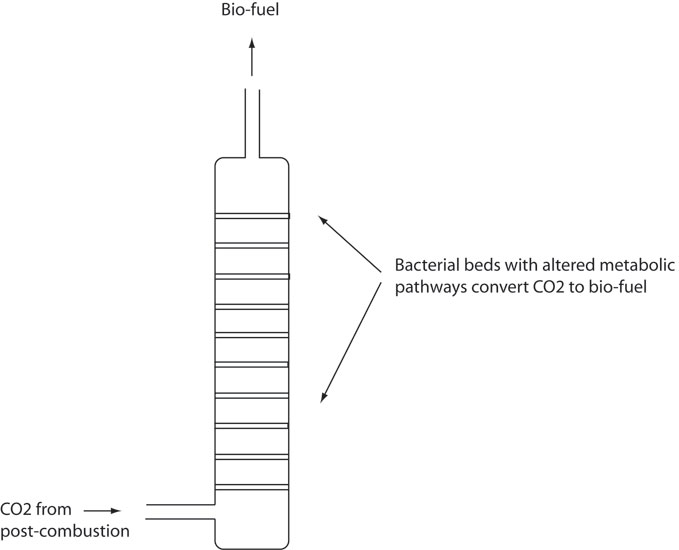Team:Edinburgh/Carbon Capture Bacterial Storage
From 2011.igem.org
m |
|||
| (One intermediate revision not shown) | |||
| Line 1: | Line 1: | ||
| + | {{:Team:Edinburgh/tech/Navbox}} | ||
| + | <html><script type="text/javascript" >$(document).ready(function() { | ||
| + | getMenus('home', 'home_foo'); | ||
| + | }); </script></html> | ||
| + | <div class="main_body"> | ||
| + | |||
| + | '''This was an old idea considered in the first couple of weeks.''' | ||
| + | |||
Carbon capture storage (CCS) - Using synthetic biology to create bacteria that consume carbon dioxide which can excrete useful substances. This project aims to deal with both the environmental and energy challenges we face. | Carbon capture storage (CCS) - Using synthetic biology to create bacteria that consume carbon dioxide which can excrete useful substances. This project aims to deal with both the environmental and energy challenges we face. | ||
| Line 20: | Line 28: | ||
We had an idea that it could work something like this. In this way it could be a contained application. We could possibly even have a closed loop system if the bio-fuel produced CO2 when burned. | We had an idea that it could work something like this. In this way it could be a contained application. We could possibly even have a closed loop system if the bio-fuel produced CO2 when burned. | ||
| - | + | </div> <!-- /main_body--> | |
| - | + | <html></div> <!-- /mids --></html> | |
Latest revision as of 14:40, 28 July 2011
This was an old idea considered in the first couple of weeks.
Carbon capture storage (CCS) - Using synthetic biology to create bacteria that consume carbon dioxide which can excrete useful substances. This project aims to deal with both the environmental and energy challenges we face.
Currently carbon capture and storage is done by utilizing existing processes such as pre-combustion, oxyfuel or post-combustion. The greenhouse gas is then geo-sequestered- stored in depleted oil and gas fields, out at sea or in unmineable coal seams or in saline aquifers, where it is stored for hundreds, possibly thousands of years. This process is carbon negative, unlike conventional renewable energy such as wind, and solar.
But why use synthetic biology? Conventional CCS risks increasing the acidity of the local environment if stored in depleted oil and gas fields at sea. Synthetic biology would allow scope to engineer an efficient pathway.
How can we use synthetic biology? Change or create new metabolic pathways using bio-bricks i.e. creating synthetic artificial photosynthesis pathway.
It is possible to engineer microorganisims to produce ‘bio-hydrogen’ or bio gas, efficiently through synthetic biology.
This idea is not a fantasy. Work has already started at the U.S. Department of Energy's National Energy Technology Laboratory. The aim at the end is to have; a pure biomass based carbon-negative synthetic fuel.
Comment from CF: Alistair is very keen on this, but I tend to think it is better to stick to contained applications since it is effectively impossible to get permission to release GM bacteria into the environment on the kind of scale that would be useful, and this is one of the types of application that causes the greatest public concern, for obvious reasons. (see the public consultation documents I gave to Clare.) So, opinion is divided - this is a potentially interesting 'human aspect' though I think others have tackled it.
THIS IDEA IS AMAZING!!
We had an idea that it could work something like this. In this way it could be a contained application. We could possibly even have a closed loop system if the bio-fuel produced CO2 when burned.
 "
"
